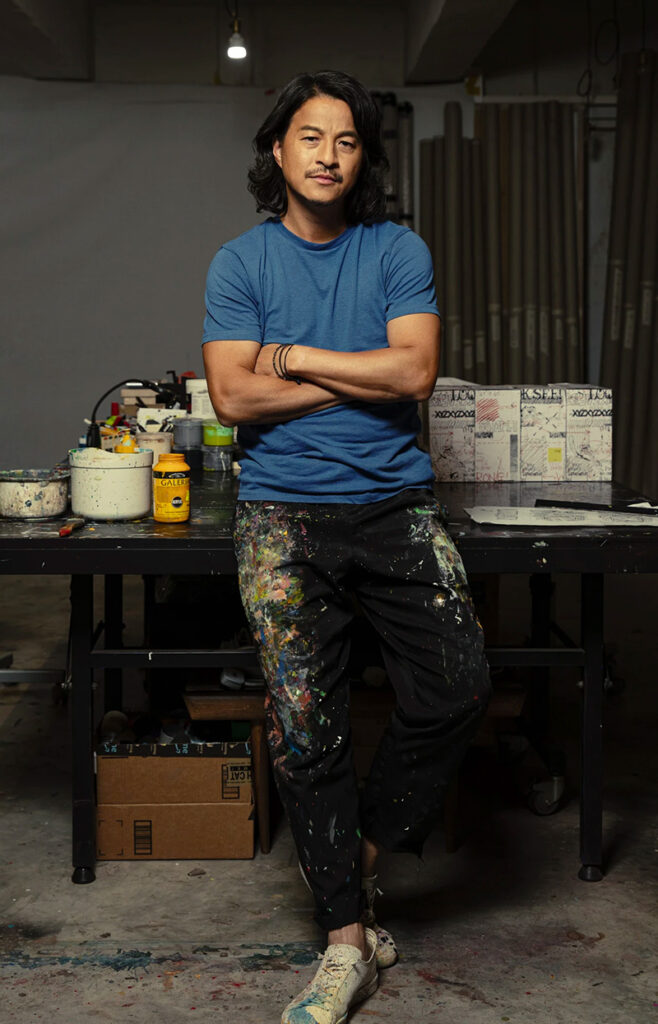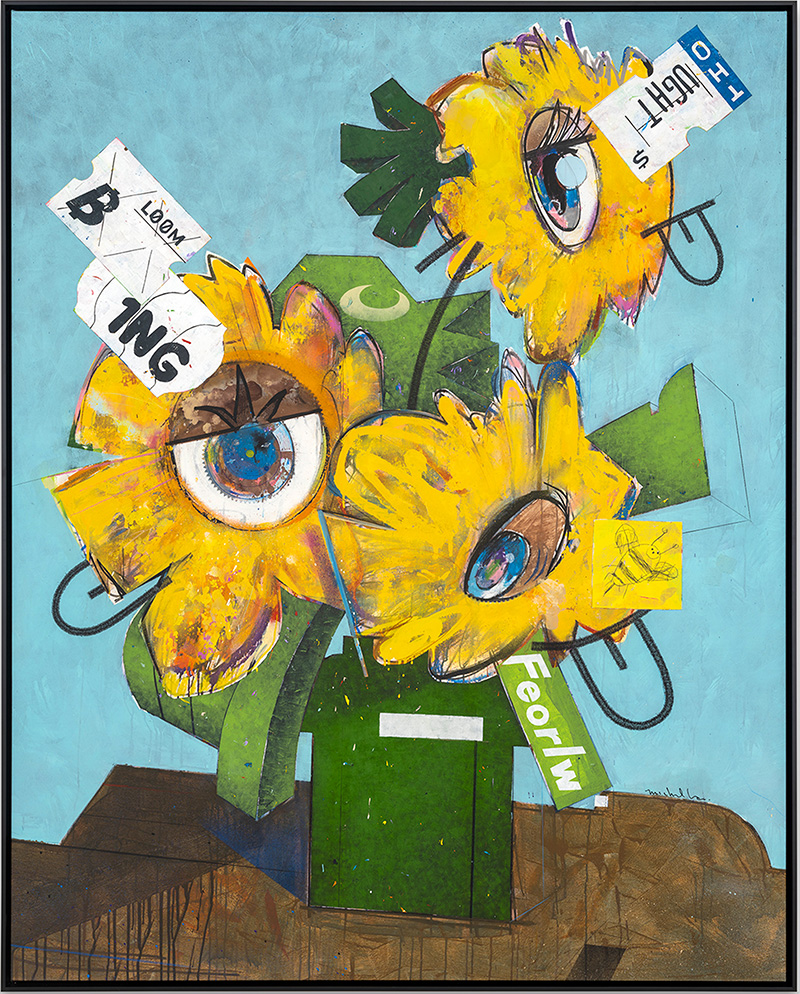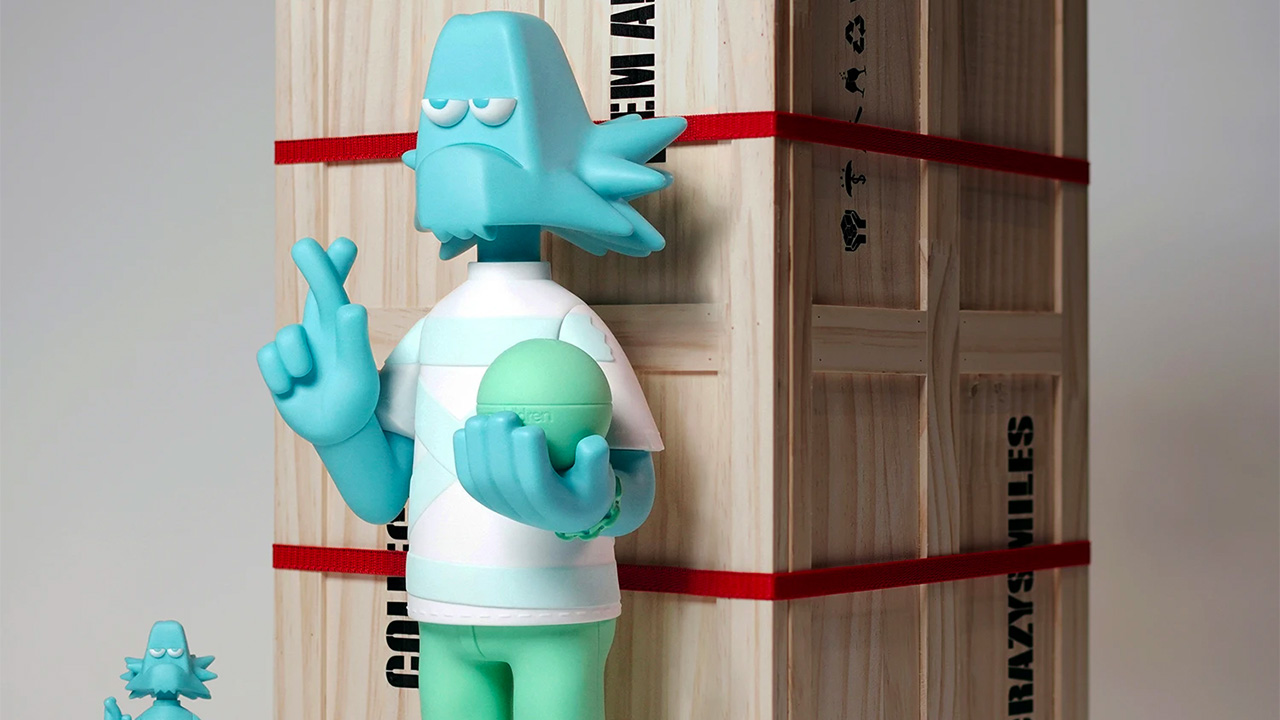Today’s art toy space is what it is because Michael Lau was there first. Sure, vinyl figurines were emerging as a cultish class of collectibles in Asia since the mid-1990s, but when Lau debuted his Gardener series in 1999, he heralded a game change.
With Gardener, his series of 99 action figures, the Hong Kong-born designer differentiated his vinyl characters with an edge and detail-heavy personality that appealed directly to street culture, while elevating the medium to make it as much toy as art. Collectors massed and a market duly sprouted around these collectibles, spurred by other art toy creators including Eric So, Jason Freeny, Kidrobot, and naturally, KAWS.
More than two decades after Gardener, the designer toy sector is now a lucrative and bustling one where collectibles like Medicom’s Be@rbrick fetch upwards of five figures at auctions, and vinyl creations by KAWS and Futura have wound their way into the museum sphere. In China, POP MART has dominated the toy market, representing 8.5 percent of the country’s toy sales, and fueling the appetite of young consumers with its ever-growing range of blind-boxed offerings.

Image: © Michael Lau
For the “godfather of designer toys,” as Lau’s often dubbed, the rise of art toys might not be all that surprising, considering the emotional and aesthetic pull these figurines offer. As he is wont to say, “All art is toys, all toys are art.” Lau’s art has further found outlets across canvases from apparel to large-scale sculptures, in partnerships with the likes of Nike and Fendi, and in his newer collectibles like Salvator Michael. And there are his paintings, which fuse his street sensibilities with a graphic, abstract expressionism — the most recent of which will be on view at the Lévy Gorvy booth at the ART021 Shanghai Contemporary Art Fair from November 11.
On the eve of his exhibition at ART021, Jing Culture & Commerce spoke to Lau about his latest work and his thoughts on how far art toys have come.
What can you share about your latest work that’s set to be unveiled at ART021?
I have two new series of work, namely Flowers and Soliloquy. Both series were conceived these two years over the COVID lockdown. I’ve never drawn flowers my whole life, but I wanted to create something that is more uplifting for the audiences, knowing how it has been a tough time for many. I approached the subject of flowers, not just treating them as plants, but humanizing them, adding my brushstrokes of doll-like eyes and expression, some details from the street and fashion, infusing a bit of surrealism to the work.
For Soliloquy, it’s basically a record of me talking to myself. People complained about quarantine during COVID, yet in fact, for my life as an artist, I go through “quarantine” almost every now and then, whenever I immerse myself into painting and creation. It didn’t bother me as much, as I do need moments of quarantine to paint.

Michael Lau, “Flower Series – Blooming Thoughts,” 2021 Image: © Michael Lau / Courtesy the artist and Lévy Gorvy
As a pioneer in the collectible toy space, what continues to surprise you about how audiences respond to your toys?
Their constant desire to collect the next new piece! Back when I was launching more art toys into the market, the moment my fans paid for the newly launched, they would immediately be asking when the next release would come. They really have a big appetite for their collections and I certainly appreciate the support in that sense.
The art toy market has continued to grow — and increasingly so in China in the past few years. How do you see this trend?
I think it is a result of how our national economy has grown and how the audience has become more sophisticated, hence driving up the demand. The size of the China economy and the growing audience that is keen to pick up art toys are substantial enough to create a trend and a movement.
On the other hand, I also feel it’s due to the times that we live in, where human interaction has become more virtual and digital, so people look more to toys/figurines as “friends” over which they have control and that could give them emotional comfort.

Salvator Michael “2020.” Image: © Michael Lau
How do you think street culture and its consumers have fed into the collectible toy market, and vice versa?
I think they are intertwined. Collectible toys are one form of medium that consumers pursuing street culture will follow and are interested in. When there is demand, there has to be supply to feed the market.
What is your view of the emergence of digital collectibles?
I think it is mainly pursued by a new generation of young collectors who have managed to accumulate a good amount of cryptocurrency and have made good profit since their first investment. How they look at art is probably quite different to conventional collectors. I do find it frustrating at times seeing how a digital file is able to command such a high price. No disrespect to digital artists though; I just feel a bit confused by the value system. At the same time, I’m happy for digital artists, because NFTs [apply] value and authentication of ownership to digital artwork, when previously it has been difficult to quantify its worth.
What continues to drive your interest and passion for art toys?
It’s the same love from day one. I’ve never seen what I do as “toys”; I’ve always seen them as a form of art. So no matter if I’m doing a painting or a sculpture or an art toy, I put in the same amount of energy and passion. No matter what you collect, be it paintings, watches, handbags, sneakers, dolls — I believe art is in the eye of the collectors, as well as being their “toy,” a companion or form that gives them comfort and security in a different sense. I’m keen to continue to create work to challenge the definitions of the conventional art world.



